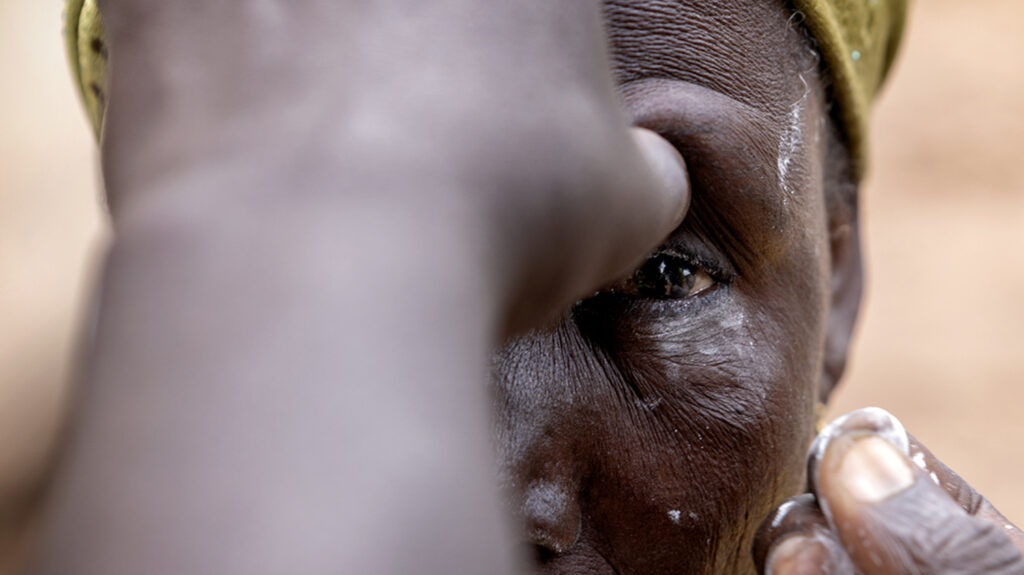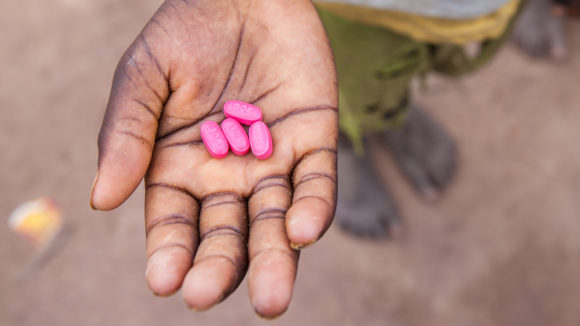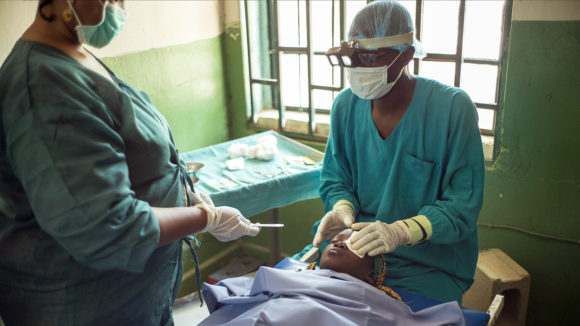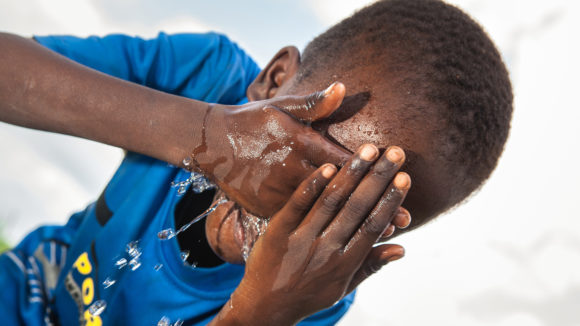What is trachoma?
Trachoma is the world’s leading infectious cause of blindness, and is part of a group of conditions known as neglected tropical diseases (often referred to as NTDs).

Latest: trachoma has been eliminated in Benin and Mali
Read the news storyTrachoma starts off as a bacterial infection that’s a bit like conjunctivitis, and can be easily treated.
But if it’s not, over time it causes scarring to the eyelid that pulls the eyelashes inward, so with every blink they scrape against the eye. This advanced form of trachoma is called trichiasis, and the pain can be so intense that many people resort to pulling out their eyelashes to reduce the agony of blinking. Over time, if it’s not treated, trichiasis can lead to blindness.
What causes trachoma?
The disease thrives where there are water shortages, poor sanitation and infestations of flies. It’s caused by repeated infection with bacteria known as ‘chlamydia trachomatis’, and it spreads through contact with infected flies and via hands, clothes or bedding that have been in contact with an infected person.
The agony and disability of blinding trachoma can lead to a cycle of poverty, limiting many people’s access to health services, education and employment.
Source: World Health Organization
How we helped to eliminate trachoma in The Gambia
Read the news storyWhat are the symptoms of trachoma?
The most common signs that a person is suffering from trachoma include:
- Discharge from the eyes
- Irritated eyes
- Redness
Because the infection spreads via hands, clothes and bedding, it disproportionately affects women and children: globally women are 1.8 times more likely than men to be blinded by the disease. If trachoma is not treated, it can lead to trichiasis.
What is trichiasis?
Trichiasis, sometimes called advanced trachoma, is when the eyes get inflamed after repeated trachoma infections. Scar tissue builds up on the inside of the eyelid, making the eyelid tight and pulling the eyelashes inwards. When the eyelashes rub the cornea, it causes immense pain and can lead to blindness.

Did you know?
Charles Dickens‘ novel Nicholas Nickleby was inspired by a 19th-century boarding school devastated by trachoma.
The history of trachomaHow is trachoma treated?
Hear the real words of people with trachoma
About our short filmOur work to treat trachoma
Our aim is to eliminate trachoma in the countries where we work, and this goal is now closer than ever.
In May 2023, Benin and Mali announced that they had eliminated the disease. Yet there are still more than 40 countries that count trachoma as a public health problem, where people are at risk of being blinded by trichiasis.
We help to control the impact and spread of trachoma by implementing the World Health Organization’s SAFE strategy: the acronym describes the four methods used to control the disease.
Trachoma prevention: the SAFE strategy
- Surgery: to stop eyelashes from rubbing against the eyeball and helping to halt the cycle of repeated infection that can lead to blindness.
- Antibiotics: medication, distributed via mass drug administration, treats the trachoma infection and reduces the spread of the disease. It is usually repeated annually for up to five years.
- Facial cleanliness: teaching local communities the importance of face washing, and encouraging good hygiene to prevent the infection being spread.
- Environmental improvements: to improve access to water and sanitation to reduce exposure and re-infection, and eliminate conditions in which flies breed.
How we’re fighting trachoma

The Accelerate trachoma elimination programme
Accelerate aims to support at least 15 countries to eliminate trachoma as a public health risk, and speed up progress in two others by 2027.

Super School of Five
This project, in Ethiopia, Kenya and Zambia, introduces five superhero cartoon characters to encourage school children to wash their hands and face.

Ascend: fighting disease in West and Central Africa
Sightsavers’ largest multiple neglected tropical disease (NTD) programme to date closed in August 2021. Great progress has been made: learn how you can continue to help.


